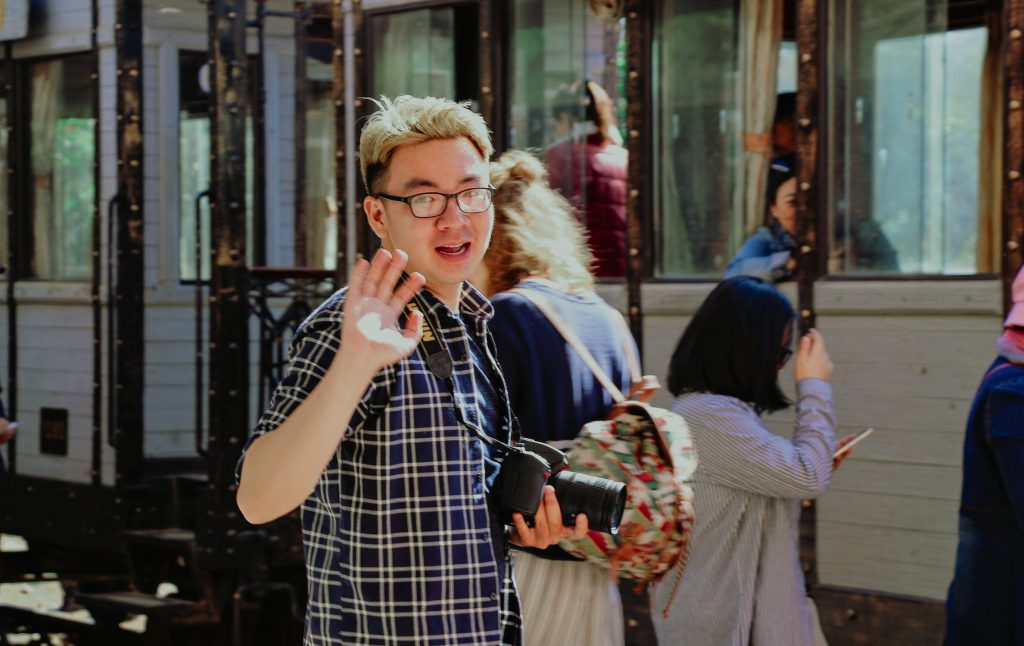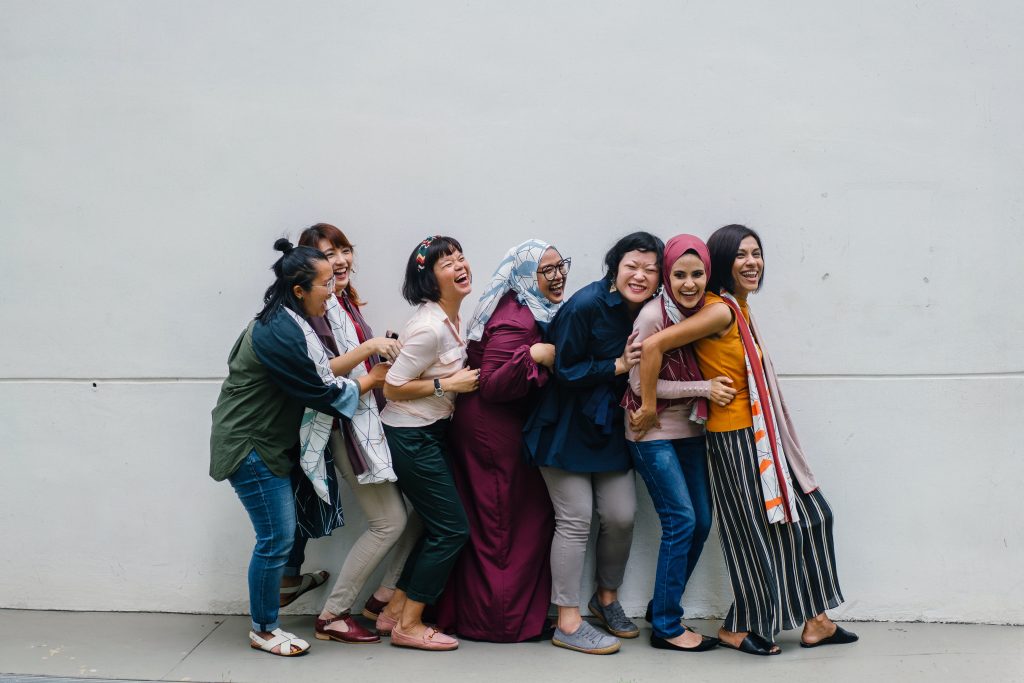¡Hola!, Saludos, ¡Ey! are all ways, among many, to say hello in Spanish!
Similar to greeting in English, you can’t start a conversation without saying hello, and this applies to most, if not all languages! Learning how to say Hi in Spanish is generally the first topic you learn, and for a good reason.
There are many types of greetings in Spanish, some are time-specific, others relationship specific— In this article, we will introduce you to these greetings and show you how to use them to kick off your Spanish learning journey!

Table of Contents
Hello in Spanish
There are a lot of Spanish words used to say hello in Spanish. Let’s kick off this guide with simple ways to say hi in Spanish!
Hello – ¡Hola!
Hola in English simply means hello. It is the most common greeting on this list and can be used anywhere at any time. In some places in Latin America, the younger generation like to say holi or holis, which is a cute or adorable way of saying hello in Spanish!
Hello everyone – Hola a todos
A common greeting when saying hello to a group of people. When addressing a certain person, you can replace a todos with names, nicknames, or pronouns. For example:
- Hola chicos (Hello guys)
- Hola mi amor (Hello my love)
- Hola papá (Hello dad)
Hi – ¡Hola!
So, how do you say hi in Spanish? Hola can be used to say hello and hi. Though, most people are starting to just say hey directly, which is a common English slang.
Hey – ¡Ey!
A short and simple way to say hey. Because of this, it is not meant to be used during formal events! Another similar greeting is oye, which means “hear”.
Greetings – Saludo
A simple phrase to greet someone. The plural, saludos, is usually used to also say bye.
Hey – Hey
An extremely informal greeting slang word from Latin America. Although, they usually just say “hey”.
How Are You in Spanish
Besides the classic hello, you can also use Spanish question words to say ”how are you?” in Spanish to greet people!
How are you in Spanish – Formal Greetings
These are greetings that can be used in formal situations such as when greeting your boss or co-workers.
How are you? – ¿Cómo está?
The most common way to say “how are you?” in Spanish, and can be generally used in any situation.
For example, You are attending a business meeting and you greet your boss with “¿Cómo está?” How this individual can respond will be discussed later.
How are you? – ¿Cómo está usted?
The Spanish word “Usted” is used to formally address the (singular) person that you want to greet. The definition doesn’t change, it’s just a lot more formal than ¿Cómo está?
How have you been? – ¿Cómo ha estado?
A Spanish greeting can also be used to ask how someone has been. Useful to start a conversation!
How do you do? – ¿Cómo le va?
A fancy way to greet someone in Spanish and ask how they are doing in that exact moment.
How have you been doing? – ¿Cómo le ha ido?
Similar to ¿Cómo ha estado? A formal greeting used when you haven’t seen someone in a while and want to catch up.
How have you been? – ¿Qué es de tu vida?
A unique greeting used in Spain.

How are you in Spanish – Informal Greetings
Greetings that are used in informal situations, such as with friends or family.
How are you? – ¿Cómo estás?
A greeting also means to ask how the person is doing.
How’s it going? – ¿Qué tal?
Similar to the previous one. Mostly used in Spain, but could be said in other countries.
How are you doing? – ¿Cómo andas?
Thus greeting has many forms.
- ¿Cómo andan? (ustedes, the formal and plural “you”), so andas is converted to ¿Cómo andan?
- ¿Cómo and? (usted, the formal and singular “you”)
- ¿Cómo andas? (tú , informal and singular “you”)
How are you doing? – ¿Cómo te va?
A similar phrase to the previous one, with different forms as well.
- ¿Cómo les va? (ustedes)
- ¿Cómo le va? (usted)
- ¿Cómo te va? (tú)
How are you? – ¿Qué tal andas?
You can replace Cómo with Qué tal (In this context, it means “How”).
How’s it going? – ¿Cómo va?
Va means “goes”, so roughly translated it means “How goes?”.
What’s up? – ¿Qué pasa?
Or It could mean “What’s happening”.
What’s new with you? – ¿Y tú de qué?
A way to say “how are you?” that is Specific to Colombia.

Responses to “How Are You?” in Spanish
Now that you know how to greet, let’s go over how you or someone may respond to being greeted!
Good, thanks, and you? (formal) – Bien, gracias, ¿y usted?
A formal phrase that means you are doing well and you are asking the person who greeted how they are doing.
Good, thanks, and you? (informal) – Bien, gracias, ¿y tú?
An informal phrase, it means you are doing well, you are thanking them for asking and you are asking the person who greeted how they are doing.
Hi, it’s a pleasure to meet you! – Hola, un placer
For people who you have just met. You are telling the person that it is nice meeting them!
Delighted to meet you – Encantado / a
Similar to the last one, just more formal.
Hi, it’s a pleasure seeing you! – Hola, un gusto de verlo / a
For someone you know and have seen before, you are saying you are happy to see them again.
Positive Responses to “How Are You?” in Spanish
When you are doing well!
Everything’s good! – ¡Todo bien!
Very good – Muy bien
Excellent – Excelente
Amazing – Genial
Good and you? – Bien, ¿y tú?
Everything’s good! – ¡Todo bien!
I’ve never been better – Nunca he estado mejor

Alright Responses to “How are you?” in Spanish
When you are not happy, but not sad either.
Here we are – Aquí estamos
Here we are – Acá andamos
So – so – Ahí ahí
So – so – Más o menos
Okay – Regular
Okay – Normal
Same old – Como siempre
Can’t complain – No me puedo quejar
Negative Responses to “How are you?” in Spanish
When things are just not going your way.
Mal – Bad
Not so good – No tan bien
Not very well – No muy bien
Awful – Fatal
Terrible – Pésimo
Awful, I don’t feel well – Malísimo, no me siento bien

Morning Greetings in Spanish
You will find that in most languages, there are time-specific greetings. Here is how to say hello in Spanish at different times of the day.
Good morning – Buenos días
Good morning in Spanish, a classic way to greet someone in the early hours of the morning!
Morning – ¡Buenas!
Similar to the previous greeting, common as well.
Good day – Buen día
This greeting can be used at anytime of the day.

Afternoon Greetings in Spanish
Good afternoon – Buenas tardes
You can use this greeting around the times between 12:00 and 5:00 p.m.
Afternoon – ¡Buenas!
A shorter version of the previous greeting.
Evening Greetings in Spanish
Good evening – Buenas noches
You can use this greeting around the times between 18:00 and 21:00 p.m. You can say good night in Spanish as a way to say goodbye!

Greetings for Letters, Emails, Calls, & More
You have to start off a conversation on paper or digitally with a greeting too! Here is how to say hello in Spanish in letters, emails, and more!
Greetings for Emails & Letters
Dear – Estimado / a
A formal greeting.
For example:
Estimado Atlas,
La reunión se realizará mañana…
(Dear Atlas,
The meeting will be held tomorrow….)
Beloved – Querido / a
An informal greeting for family and friends.
For example:
Querida mamá,
¡No puedo esperar a verte!…
(Beloved mama,
I can’t wait to see you!..)
Distinguished – Distinguido / a
Another formal greeting. You can add the person’s title. name and/or surname afterward.
For example:
Distinguida señorita,
Estás invitado a unirte a la gala..
(Distinguished miss,
You are invited to join the gala…)
Dear Sir/Mrs./Ms/ – Estimado /a Señor / Señora / Señorita
For the formal greeting mentioned previously, you can add the name or title of the person you are addressing afterward.
For example:
Estimado señor Juan,
Los documentos están listos…
(Dear Mr Juan,
The documents are ready…)
To whom it may concern – A quién corresponda
A formal greeting to use when you don’t know who you are addressing.
For example:
A quién corresponda,
He presentado una denuncia formal…
(To whom it may concern,
I have lodged a formal complaint…)
Greetings for Calls
We have listed a few ways to say hello in Spanish that is used when answering phone calls.
Hello? – ¿Hola?
Yes? – ¿Sí?
Hello? – ¿Aló?
Go ahead – ¿Diga?
Tell me – ¿Dígame?
Thank you for calling – Gracias por llamar
How may I help you? – ¿En qué le puedo ayudar?
Yes/Hello? – ¿Bueno?
Bueno means “good”, but in Mexico it can be used to answer calls and it means similar to yes or hello.
Greetings for Texts
Here is how to say hello in Spanish when texting. Most of these are extremely informal, slangish words, so don’t use them to text your boss!
Hello – Hla
Hola without the o.
How are you? – q tl?
¿Qué tal? without the ué or a.
How are you? – como tas?
Abbreviated form of Cómo estás.
I’m good – Toy bien
provide a brief explanation of the phrase
Greetings – salu2 (saludos)
Saludos, but the dos (meaning 2 in Spanish) is replaced with a 2.
Genial – gnl
Meaning “nice” or “cool”.

Specific Greetings for Situations
Any noteworthy day will have its own greeting in Spanish. It will mostly be some variation of the word Feliz (happy).
Happy Birthday – Feliz cumpleaños
There are many ways to wish someone a happy birthday in Spanish, for now, let’s keep with the basics that can be used as a greeting!
Happy Anniversary – Feliz aniversario
This greeting can be used for any anniversary, whether it be marriage or job-related!
Happy New Year – Feliz Año Nuevo
A greeting and something to shout when that timer ticks down to zero!
Happy Valentine’s Day – Feliz San Valentín
This greeting should rather be used with people you know or close family and friends.
Merry Christmas – Feliz Navidad
A greeting for that magical time of year!

Country Specific Greetings
Almost every country that has a Spanish-speaking population has a unique greeting. Here are some examples:
Hi dude – Hola, tío
Used in Spain.
Friend! – ¡Amigo/a!
Mexico.
Purest Virgin Mary! – ¡Ave María Purísima!
Argentina. Used among Palmarians as a prayer while greeting someone.
What’s new with you? – ¿Y tú de qué?
Columbia.
Good day – Wena.
Chile. Simply pronounced as weh-nah.
What’s up, comrade? – ¿Qué hubo, compadre?
Venezuela. Comrade means to say that someone is your friend, ally, or colleague.
After the ¡Hola! (Hello!) Comes the ¡Adiós! (Goodbye!)
Conversational Spanish takes a while to get the hang of, learning how to say hello is a nice starting point. Afterward, you should dive into more complicated topics like time in Spanish to further improve your fluency.
To become fluent in a language in a quick and easy fashion, try getting an online language tutor at AmazingTalker for a professional and overall better learning experience than on your own! You can choose from a wide range of courses that suit your learning needs, you can even customize them!
All of these and more, at AmazingTalker!


















